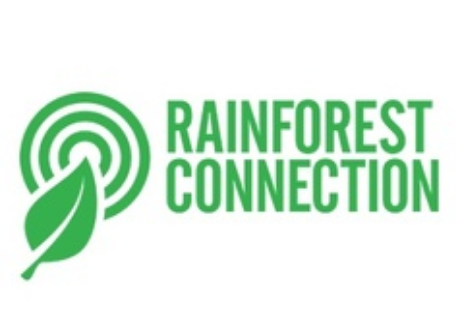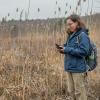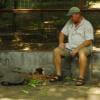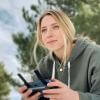With new technologies revolutionizing data collection, wildlife researchers are becoming increasingly able to collect data at much higher volumes than ever before. Now we are facing the challenges of putting this information to use, bringing the science of big data into the conservation arena. With the help of machine learning tools, this area holds immense potential for conservation practices. The applications range from online trafficking alerts to species-specific early warning systems to efficient movement and biodiversity monitoring and beyond.
However, the process of building effective machine learning tools depends upon large amounts of standardized training data, and conservationists currently lack an established system for standardization. How to best develop such a system and incentivize data sharing are questions at the forefront of this work. There are currently multiple AI-based conservation initiatives, including Wildlife Insights and WildBook, that are pioneering applications on this front.
This group is the perfect place to ask all your AI-related questions, no matter your skill level or previous familiarity! You'll find resources, meet other members with similar questions and experts who can answer them, and engage in exciting collaborative opportunities together.
Just getting started with AI in conservation? Check out our introduction tutorial, How Do I Train My First Machine Learning Model? with Daniel Situnayake, and our Virtual Meetup on Big Data. If you're coming from the more technical side of AI/ML, Sara Beery runs an AI for Conservation slack channel that might be of interest. Message her for an invite.
Header Image: Dr Claire Burke / @CBurkeSci

Explore the Basics: AI
Understanding the possibilities for incorporating new technology into your work can feel overwhelming. With so many tools available, so many resources to keep up with, and so many innovative projects happening around the world and in our community, it's easy to lose sight of how and why these new technologies matter, and how they can be practically applied to your projects.
Machine learning has huge potential in conservation tech, and its applications are growing every day! But the tradeoff of that potential is a big learning curve - or so it seems to those starting out with this powerful tool!
To help you explore the potential of AI (and prepare for some of our upcoming AI-themed events!), we've compiled simple, key resources, conversations, and videos to highlight the possibilities:
Three Resources for Beginners:
- Everything I know about Machine Learning and Camera Traps, Dan Morris | Resource library, camera traps, machine learning
- Using Computer Vision to Protect Endangered Species, Kasim Rafiq | Machine learning, data analysis, big cats
- Resource: WildID | WildID
Three Forum Threads for Beginners:
- I made an open-source tool to help you sort camera trap images | Petar Gyurov, Camera Traps
- Batch / Automated Cloud Processing | Chris Nicolas, Acoustic Monitoring
- Looking for help with camera trapping for Jaguars: Software for species ID and database building | Carmina Gutierrez, AI for Conservation
Three Tutorials for Beginners:
- How do I get started using machine learning for my camera traps? | Sara Beery, Tech Tutors
- How do I train my first machine learning model? | Daniel Situnayake, Tech Tutors
- Big Data in Conservation | Dave Thau, Dan Morris, Sarah Davidson, Virtual Meetups
Want to know more about AI, or have your specific machine learning questions answered by experts in the WILDLABS community? Make sure you join the conversation in our AI for Conservation group!
GreenLab

- 0 Resources
- 19 Discussions
- 8 Groups
- 0 Resources
- 0 Discussions
- 2 Groups
Over 35 years of experience in biodiversity conservation worldwide, largely focused on forests, rewilding and conservation technology. I run my own business assisting nonprofits and agencies in the conservation community


- 0 Resources
- 25 Discussions
- 11 Groups
- @fsanger
- | she / her/ ella
- 0 Resources
- 4 Discussions
- 7 Groups
- @roxirisa
- | roxi
Biologist I consider myself a data scientist with a passion for nature and with an extensive experience in species distribution modeling, handling large data sets from different sources such as gbif, eBird, xeno-canto, Worldclim, Terraclimate, ocean color e NASA among others. But
- 0 Resources
- 0 Discussions
- 9 Groups
Environmentalist and Python developer working in the realm of Remote Sensing. Fascinated by the intersection of technology and nature, with a focus on machine learning, ecological modeling, and biodiversity monitoring. 🌍
- 0 Resources
- 0 Discussions
- 11 Groups

- 0 Resources
- 0 Discussions
- 2 Groups
- 0 Resources
- 0 Discussions
- 1 Groups
- 0 Resources
- 0 Discussions
- 3 Groups
- @Namitha
- | She/her
Physics PhD candidate enthusiastic about conservation and ecology
- 0 Resources
- 0 Discussions
- 1 Groups
Founder & CEO of we.are.tohorā, creating a community that cares about whales, the environment and each other.
- 0 Resources
- 0 Discussions
- 13 Groups
- @Bijin
- | He/him
I am a high-school student who enjoys wildlife photography and the intersection between technology and conservation.
- 0 Resources
- 0 Discussions
- 1 Groups
In 1987, sustainability was defined by the United Nations Brundtland Commission as “meeting the needs of the present without compromising the ability of future generations to meet their own needs.”In 1987,...
7 May 2024
€2,000 travel grants are available for researchers interested in insect monitoring using automated cameras and computer vision
3 May 2024
Save the Elephants is seeking a Principal Investigator for our Elephant Collective Behaviour Project. This role will spearhead research initiatives using cutting-edge video analysis tools to study elephant group...
1 May 2024
Article
Read in detail about how to use The Inventory, our new living directory of conservation technology tools, organisations, and R&D projects.
1 May 2024
Article
The Inventory is your one-stop shop for conservation technology tools, organisations, and R&D projects. Start contributing to it now!
1 May 2024
Technology to End the Sixth Mass Extinction. Salary: $132 - $160k; Location: Seattle WA; 7+ years of experience in hardware product development and manufacturing; View post for full job description
1 May 2024
Review by Professor Iain H Woodhouse
29 April 2024
Careers
The Smithsonian National Zoo & Conservation Biology Institute is seeking a Program Manager to help coordinate multiple organizations in an effort to integrate movement data & camera trap data with global...
22 April 2024
The Smithsonian National Zoo & Conservation Biology Institute is seeking a Postdoctoral Research Fellow to help us integrate movement data & camera trap data with global conservation policy.
22 April 2024
Join the Seeed Vision Challenge, an opportunity for conservation innovators to harness the power of AI vision sensors for environmental monitoring and protection.
10 April 2024
Full-Stack Software Developer (Python/React) - Specializing in AI/ML for Wildlife Conservation
5 April 2024
Article
Article from Ars Technica about how difficult it is to detect and avoid kangaroos...
3 April 2024
June 2024
September 2024
event
October 2024
October 2023
event
event
47 Products
Recently updated products
13 Products
Recently updated products
| Description | Activity | Replies | Groups | Updated |
|---|---|---|---|---|
| Hi all, one of the 8 MozFest 2023 spaces is 'Tech & Biodiversity', and the organisers seek input for an event on the intersection of... |
|
AI for Conservation, Ethics of Conservation Tech, Open Source Solutions | 1 year 6 months ago | |
| Out of curiosity, what are the similarities/differences between your platform and other image classification ones such as Wildlife Insights, WildID, ZambaCloud? I don't mean that... |
|
AI for Conservation, Emerging Tech | 1 year 7 months ago | |
| Thanks so much!! |
|
Acoustics, AI for Conservation, Biologging, Camera Traps, Community Base, Data management and processing tools, Drones, eDNA & Genomics, Emerging Tech, Open Source Solutions, Remote Sensing & GIS, Software and Mobile Apps | 1 year 7 months ago | |
| Hi there Camilo, What an interesting project! If you are looking for a lower cost, but effective tools for acoustic monitoring you might want to look into two options: ... |
|
Acoustics, AI for Conservation, Data management and processing tools, Sensors, Software and Mobile Apps | 1 year 7 months ago | |
| Hi Yvan,If you find something which reaches your expectation and especially the ability to identify individual with plumage patterns I will be intereted.In the same idea that... |
|
AI for Conservation, Camera Traps | 1 year 9 months ago | |
| Have you considered creating a Kaggle competition? If you already have lots of images, and some that have been labelled, then this could be a good way to get people working on a... |
|
AI for Conservation, Autonomous Camera Traps for Insects, Camera Traps | 1 year 9 months ago | |
| Hi everyone, I'm new here! I'm a UX designer and researcher, and an animal lover. Excited to be part of Conservation Tech here at WildLabs... |
|
AI for Conservation, Human-Wildlife Conflict, Software and Mobile Apps, Wildlife Crime | 1 year 10 months ago | |
| @gracieermi & I are happy to announce the latest update to the Conservation Tech Directory, bringing our total resources in the... |
|
Acoustics, AI for Conservation, Biologging, Camera Traps, Community Base, Data management and processing tools, Drones, eDNA & Genomics, Remote Sensing & GIS, Software and Mobile Apps | 1 year 10 months ago | |
| Thank you so much Netty, I really enjoyed it.Good luck to you all with your work.Keep well! |
|
AI for Conservation, East Africa Community | 1 year 10 months ago | |
| Thank you @carlybatist , @Freaklabs and @MK . The inputs are very useful and I am progressing on my project based on that. Appreciate a lot. |
|
Acoustics, AI for Conservation | 1 year 11 months ago | |
| Some folks doing work in this space - Wildlife Drones, Conservation Drones, UAV Wild, AfricanDrones, Oceans Unmanned, Geonadir. |
|
Drones, AI for Conservation, Citizen Science, eDNA & Genomics, Emerging Tech | 1 year 11 months ago | |
| Dear Community,Together with Hackster.io, Seeed Studio is very happy to jointly organize “IoT Into the Wild Contest for Sustainable Plant... |
|
AI for Conservation, Connectivity, Emerging Tech, Open Source Solutions, Sensors | 1 year 11 months ago |
Live Q&A on AI models to process Camera Trap Imagery: All about WildID
21 June 2022 6:49am
23 June 2022 11:43am
Thank you so much Kate for the excellent answers, explanations, insights and pointers; This was nothing short of Amazing!
Thank you all for joining us in this discussion; I hope this has been helpful and you now have a solution for processing your 1 million + camera trap imagery. If you have any questions for Kate, please feel free to drop them in this discussion thread- she is more than happy to answer. If you’d like to reach out to Kate directly, you can Direct message her here or send her an email at: [email protected]
Thank you!
23 June 2022 11:45am
Thank you so much Netty, I really enjoyed it.
Good luck to you all with your work.
Keep well!
Live Q&A session on AI models for Processing Camera Trap Imagery:A highlight of WildID.
22 June 2022 1:42pm
Bird Acoustic Solution
9 June 2022 11:31pm
11 June 2022 1:16pm
There are a bunch of different options for detecting calls in audio data, from proper statistical platforms such as R/Python, to bespoke software such as Arbimon, Kaleidoscope & Raven. Edge Impulse also an online ML model-building interface, but this is more focused on then deploying the models onto devices for edge computing. Arbimon has template matching features that are a good way to start finding detections to build a training dataset, I have used it for this in the past. Arbimon is online & free. Kaleidoscope has a clustering function which is again a good first step to start picking out the low-hanging fruit of detections so to speak. It's a desktop app, but this is not free ($400/yr). Raven also has some automated features - template & band-limited entropy detectors. It's also a desktop app and not free ($100-$800 depending on 1-year or permanent license and whether non-profit or not; not sure where a government agency would fit into that).
There is always the ubiquitous split between biologists who traditionally are taught to use R and tech/computer folks who are taught to use Python, but for ML, Python's ecosystem is really well set up. Not sure what the level of programming you/your dept has, but there are a TON of free resources online for learning it if you were interested.
Relevant Python bioacoustics packages potentially of use - Acoustic_Indices, scikit-maad, Ketos, OpenSoundscape (as well as the obvious ML ones such as TensorFlow)
Some R packages as well - soundecology, bioacoustics, monitoR, warbleR, gibbonR
@tessa_rhinehart has created a fabulous list of bioacoustics software that you can find here: https://github.com/rhine3/bioacoustics-software.
You can also turn to articles that have already done similar things and reach out to the authors to discuss their methods. I've got a (totally un-exhaustive) list of papers on passive acoustic monitoring, with a section on 'analyses' that you might find useful to start with; I can email it to you if you'd like. Working on a PAM training materials page on my website that it will be available at shortly as well (will post the link to Wildlabs when it's live!).
Hope this is helpful!
16 June 2022 9:27am
Hi,
Look at this publication (below) and download the BirdNet app. The computer code is provided to train ML algorithm that will allow you to tailor the model with your own data.
Thanks, Mrigesh
20 June 2022 1:00am
Thank you @carlybatist , @Freaklabs and @MK . The inputs are very useful and I am progressing on my project based on that. Appreciate a lot.
Cofounder needed
9 June 2022 4:23pm
17 June 2022 1:14pm
What about developing a drone conservation training course for field conservation staff teaching specific skills for specific research needs.
17 June 2022 6:54pm
How exciting @Joyeeta ! I'd love to learn more about the companies and projects you worked on, can you share more info about them?
I once chatted to an entrepreneurial advisor with a couple of my conservation tech ideas, and he said my ideas are good/impactful but don't make for a product worth millions of $$$ of turnover per year that would interest investors. So I am very curious about how you got your conservation tech businesses off the ground!
18 June 2022 8:33pm
Some folks doing work in this space - Wildlife Drones, Conservation Drones, UAV Wild, AfricanDrones, Oceans Unmanned, Geonadir.
Silverstrand Capital Biodiversity Accelerator+
17 June 2022 11:03am
Multiple Roles with Rainforest Connection
 Rainforest Connection
Rainforest Connection
16 June 2022 9:15am
Join Seeed’s “IoT Into the Wild Contest for Sustainable Planet 2022” on Hackster to Get 100 Free Hardware and to Win $14,000+ in Prizes!!
14 June 2022 11:04am
Join Seeed’s “IoT Into the Wild Contest for Sustainable Planet 2022” on Hackster to Get 100 Free Hardware and to Win $14,000+ in Prizes!!!
14 June 2022 9:14am
Switch to Conservation IT
10 June 2022 1:47am
11 June 2022 1:39pm
Do you have any particular areas of interest within using AI for conservation tech? e.g., camera trapping, tracking/telemetry, passive acoustic monitoring, eDNA, etc.
You might also check out the Conservation Tech Directory to see what other kinds of companies, organizations, etc. are involved in those different spaces and which are best aligned with what would want to do.
11 June 2022 3:10pm
Thanks Carly. No special areas of interest for now although that will happen over time. Thanks so much for your reply. I will check the Conservation Tech directory out.
Soumya
2 postdoc positions: AI for Biodiversity Monitoring
11 June 2022 2:40pm
TAI4ES: Trustworthy Artificial Intelligence for Environmental Science, 2022 summer school
4 June 2022 11:31am
Postdoc: computer vision for insect monitoring
4 June 2022 11:12am
3 open positions at Impact Observatory
4 June 2022 10:55am
Science Director, Vulcan
 Vulcan
Vulcan
4 June 2022 10:50am
New microprocessor for low power AI camera & audio applications from Microchip
3 June 2022 8:36pm
Global Forest Watch Small Grants Fund
1 June 2022 4:19pm
Post-doc in Multi-Sensor Fusion for Animal Biomechanics
1 June 2022 9:56am
Enhancing automated analysis of marine soundscapes using eco-acoustic indices and machine learning
31 May 2022 6:33pm
UKAN+ Monitoring UK Biodiversity Symposium 15-16th June
31 May 2022 2:58pm
WILDLABS Virtual Meetup: Future Questions & Tools in Movement Ecology
24 May 2022 10:10pm
A comprehensive review on biodiversity information portals
9 May 2022 3:16pm
Executive Director - The Eric & Wendy Schmidt Center for Data Science & Environment, UC Berkeley
9 May 2022 10:13am
CV4Ecology Summer School
3 May 2022 6:13pm
WILDLABS Virtual Meetups Season Four: Tracking Progress
29 April 2022 9:57am
News: The Latest in Conservation Tech (March 24)
24 March 2022 12:00am
Apply now: Women in Conservation Technology Programme, Kenya
8 March 2022 12:00am
BirdCLEF 2022 Kaggle Challenge
 The Cornell Lab of Ornithology
The Cornell Lab of Ornithology
2 March 2022 12:00am
Introducing the WILDLABS On the Edge Fellows
10 February 2022 12:00am
WILDLABS Fellowships & Awards: Matchmaking between tech and conservation
28 January 2022 3:22pm
















































23 June 2022 11:35am
Nothing too much more to share about WildID - I think you've had an earful already! But just to say that we really do enjoy working with our users, so don't be shy to get in touch for any questions, or think you would be bothering us if you need support. We're excited to bring more projects on board and extend our training sets to new locations, camera types and species.
For those in regions outside Africa, we are considering releasing a version of WildID that uses MegaDetector from Microsoft AI - so it will classify your images into empties, and then human, vehicle and animal (just those three classes). You would then be able to define your own species list, and edit the animal pictures to the correct species. Still a fair amount of work for you to edit, but you are probably doing the work already, and at least you would have an easy interface in which to do it, and particularly empties excluded already for you. Get in touch with us if this would be of use to you.